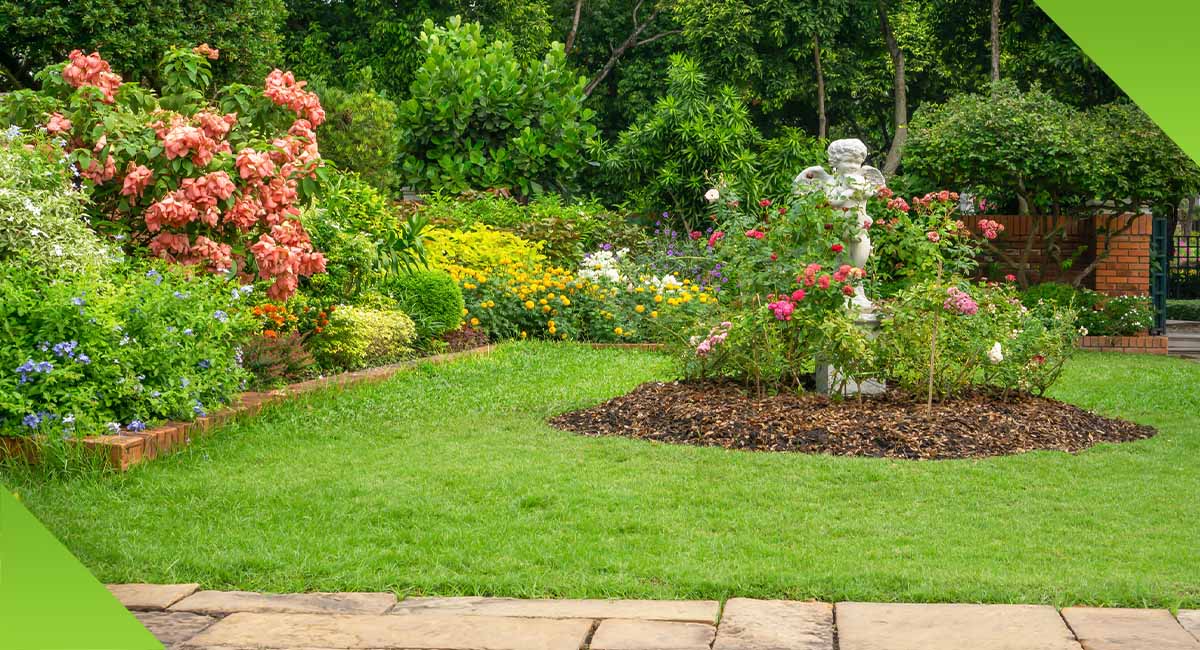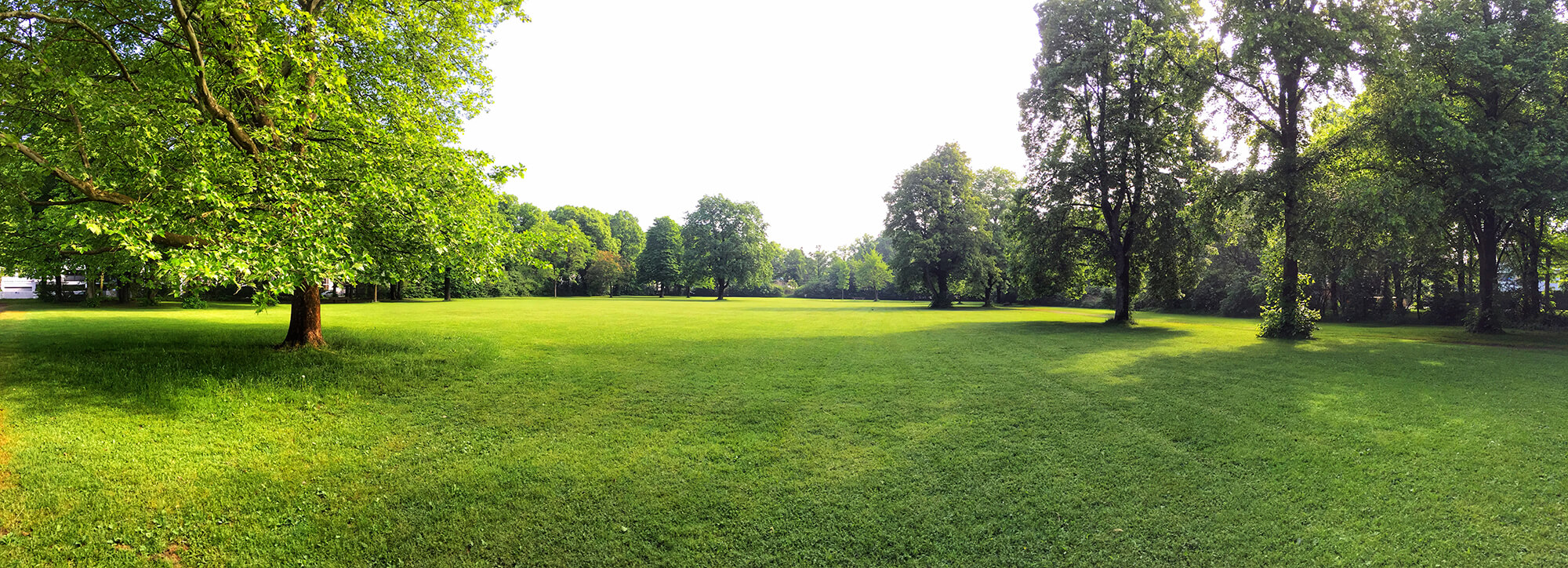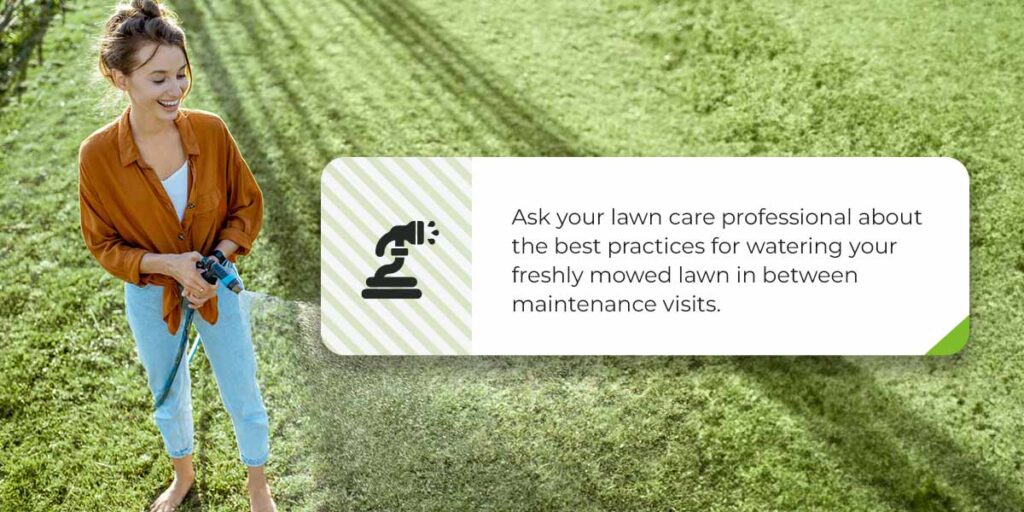
Summer is the time to keep your lawn well-maintained. A lawn that’s clearly taken care of is great for curb appeal, and mowing actually has health benefits, such as minimizing insects around your business or home and keeping some allergens at bay. Most of us either do it ourselves or hire someone to do it for us.
Either way, maintaining your lawn during the summer months involves more than a simple mowing of the lawn. There are several other items that must accompany the lawn mowing process to make sure your lawn always looks fresh and well-maintained.
Jump to:
- Preparing Your Lawn for a Fresh Cut
- What to Do After Mowing Your Lawn
- Lawn Mowing and Maintenance FAQ
Preparing Your Lawn for a Fresh Cut
Prior to mowing the lawn at the start of the season, check out these tips to enjoy a beautiful long-term finish:
- Clean and rake: Before you mow, take a few minutes to check for debris, sticks, broken tree limbs, stones or leaves that you can rake up. A clear lawn is safer for mowing and can help your lawn treatments apply and absorb better.
- Use sharp blades: Using dull blades to cut your grass can rip, shred, and tear your grass — potentially even ripping it up from the roots. This can put unnecessary stress on your grass and increase the risk of mold spores and bacteria growth. Your grass is a living organism, so be sure you give it a clean cut by keeping your blades sharp.
- Mow on dry grass: Mowing wet grass can cause clippings to get stuck to your mower’s wheels. Cutting on wet grass can also pose a slipping hazard if your landscape has hills and slopes. Cutting dry grass will allow for easier navigation and cleanup.
- Avoid cutting too much: Mowing your grass too short is known as scalping, which can put stress on the blades and cause weed infestation and disease. Be careful not to mow too much length at once by using the one-third rule. Gradually decrease the height of your grass by no more than one-third of the blade of grass.
- Keep a regular schedule: Mow at least once a week or every two weeks to eliminate weeds and keep your lawn looking pristine.
- Encourage a rich garden ecosystem: Consider leaving an area unmowed to encourage wildflowers to grow and provide natural resources for insects and other wildlife. Remember, a healthy garden can keep pests under control!
What to Do After Mowing Your Lawn
Once you have actually mowed the lawn, you are not done with this biweekly chore. Mowing the lawn is only one piece of keeping your lawn growing beautifully. Remember, when you mow your lawn, make sure you are cutting the grass to the recommended length for optimum growth and health.
1. Keep Weeds Under Control
Once you’ve mowed, make sure you follow up by weed-whacking the lawn. This finishing touch helps remove any weeds from your lawn that the weedkiller left behind. Weeds can be the death of your lawn, so you want to make sure to keep them at bay with every mow. Some prefer to tackle weeds before they mow. However, completing this step afterward means the mowed grass serves as a guideline to tell you how high to cut the weeds.
2. Edge Your Lawn
Once everything is cut, it is time to edge your lawn. Have you ever walked by a lawn and thought how nice the definitive lines were between the lawn and the pavement? That is a result of edging. Edging makes your lawn look more finished and removes the weeds. It can also prevent issues that may be creeping up between the cracks in your pavement and the edge of your lawn.
3. Clean Debris
The next step is to utilize a leaf blower to clean the pavement of all of the clippings from your lawn maintenance. This helps keep your property clean and keep grass clippings from sneaking into your business and car. Removing grass clippings can also improve airflow and encourage the grass to thicken.
4. Aerate as Needed
If your grass feels hard to the touch and has trouble absorbing water, it’s likely compacted. Compacted soil doesn’t absorb the nutrients it needs to stay healthy. Aerating your lawn creates small holes in the soil that allow air, water, and fertilizer to reach the roots. Fortunately, most lawns only need to be aerated once per year or every few years, depending on whether your lawn gets lots of traffic or has heavy clay soil.
Aerating can be a tricky process, especially if you’ve never done it before. A property maintenance company can ensure the right equipment is used to keep your lawn looking its best.
5. Fill in Bare Patches
Once your grass has been treated, cut, and cleared of dead weeds, now is a great time to put down lawn seed and patch up any bare spots. Depending on how your lawn looks, you can overseed it to prepare it for the hot summer months. This process requires lawn seeding soil and fresh lawn seed to replace the old grass.
6. Keep It Watered
Finally, make sure to water your lawn properly as recommended. Too much water may drown it out, while not enough water will cause it to dry up and die. Ask your lawn care professional about the best practices for watering your freshly mowed lawn in between maintenance visits.
Lawn Mowing and Maintenance FAQ
Your lawn maintenance routine will vary depending on your location, time of year, climate, and type of grass you have. Here are some other commonly asked questions you might have about the mowing process.
1. Should You Water Your Lawn After Mowing?
It’s not usually necessary to water a lawn directly after mowing. Remember that your grass is more susceptible to potential damage and stress after mowing and that overwatering can lead to pest infestations and disease. Watering during the sunniest part of the day may cause water loss through evaporation, potentially causing scorching. Typically, the best time to water your lawn is in the morning before it gets too hot.
Consider only watering your lawn after mowing if you notice signs of dehydration, such as:
- Yellowing or browning grass blades.
- Dry, cracked soil.
- Wilting grass blades.
2. How Soon Should You Water Your Grass After Cutting It?
If your lawn looks like it needs post-mowing watering, wait at least 30 minutes to an hour before doing so. Ideally, wait until the late afternoon when the sun isn’t blazing or the morning after you mow. This will allow your fresh-cut grass to absorb sufficient moisture.
3. Should You Fertilize After Mowing?
In general, it’s best to wait to mow your lawn until after you’ve applied your treatments. If you mow your lawn before you apply fertilizer or herbicide treatment, there won’t be enough grass to absorb the product, and it may not be as effective as it could be. If you fertilize during the entire growing season, your lawn will continue to grow beautifully, staying well-nourished throughout even the hottest days of the year.
Most lawn care companies will help you prepare a proper fertilization schedule that will ensure the lawn mowing process is successful in keeping your lawn lush. In addition to fertilizing, now is the time to add treatments, such as weed and grub killers, allowing them to penetrate the soil and help fight potential harm to your lawn.
Keep Your Lawn Healthy With Green & Black
If you are tired of mowing the lawn on your own or do not have the time to maintain your property, a professional lawn care service provider can help. The experts at Green & Black perform a variety of commercial and residential property maintenance services to keep your lawn looking fresh. We invite you to request a free quote online today!



